Abstract
OBJECTIVES: To determine the proportion of patients who are accompanied by another person (ie, partner, child, relative, friend) during visits to their doctors; to describe the demographic characteristics and role(s) assumed by the main accompanying person and the nature of the presenting dyads; and to describe the influence of the main accompanying person on the patient-doctor interaction. DESIGN: Prospective observational survey. SETTING: Family practices in London, Ont, and surrounding area. PARTICIPANTS: Eight family physicians completed surveys on 100 consecutive patients attending for both regularly scheduled and emergency visits. MAIN OUTCOME MEASURES: Roles and influence of the main accompanying person. RESULTS: Approximately one third (30.4%) of patients were accompanied during visits to their doctors. Children and patients older than 75 years most frequently had another person with them. Most patients (74.1%) were accompanied by one person who most often was female (72.6%) and between the ages of 21 and 40 years (53.6%). The accompanying person's role was most frequently described by doctors as an advocate for the patient (n = 235, 68.5%). If the accompanying person was a child, however, the role was most often described as a silent observer (n = 36, 68.6%). The influence of the main accompanying person on the patient-doctor encounter was usually described as positive (95.1%). CONCLUSIONS: Physicians report that people accompanying patients usually have a positive influence on medical encounters. Future studies need to include patients' and accompanying persons' perspectives.
Full text
PDF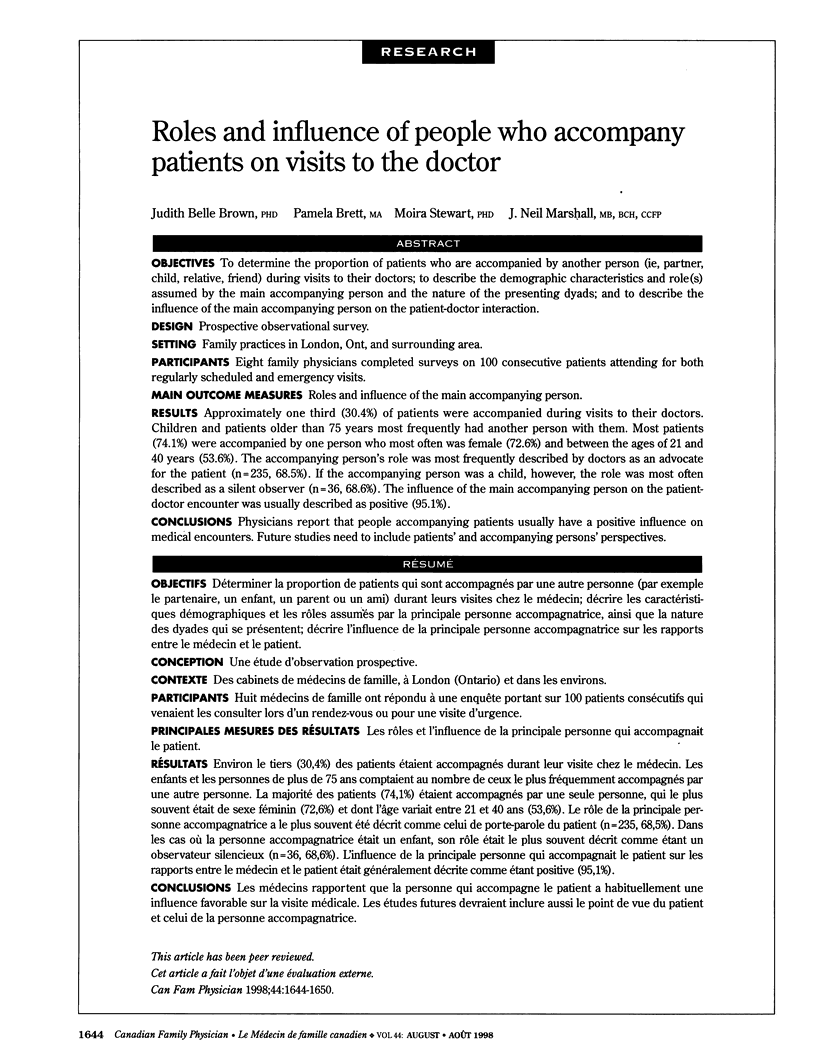
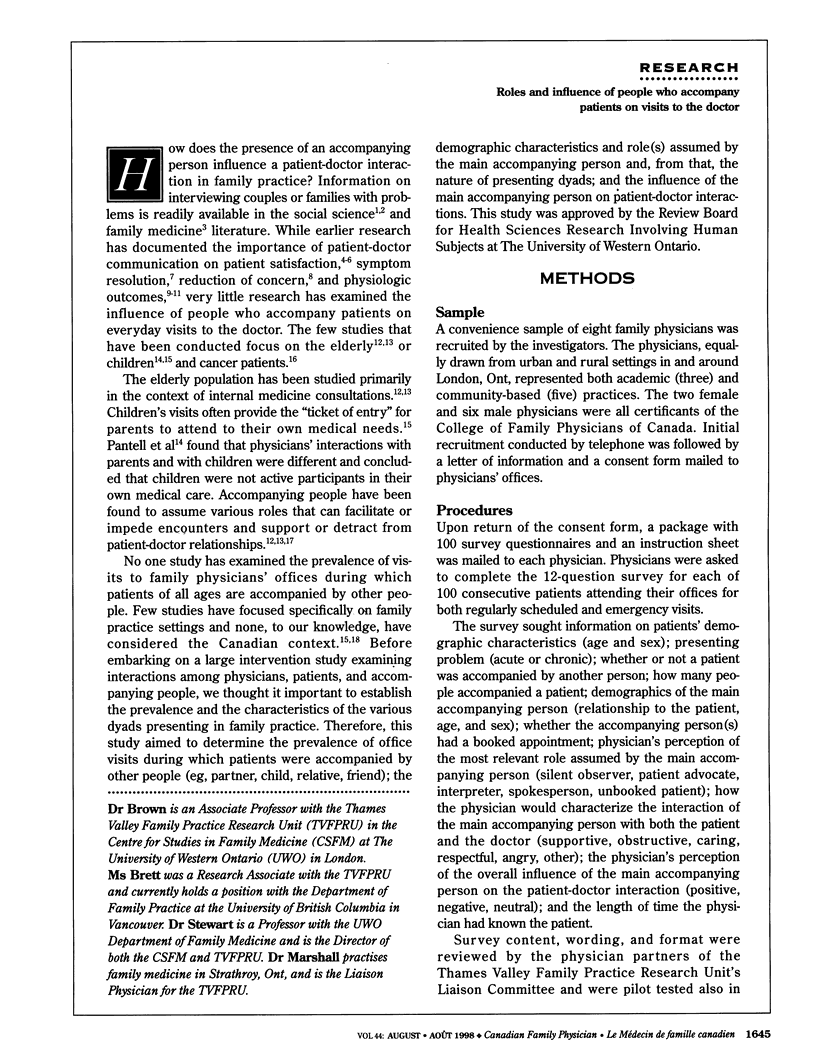
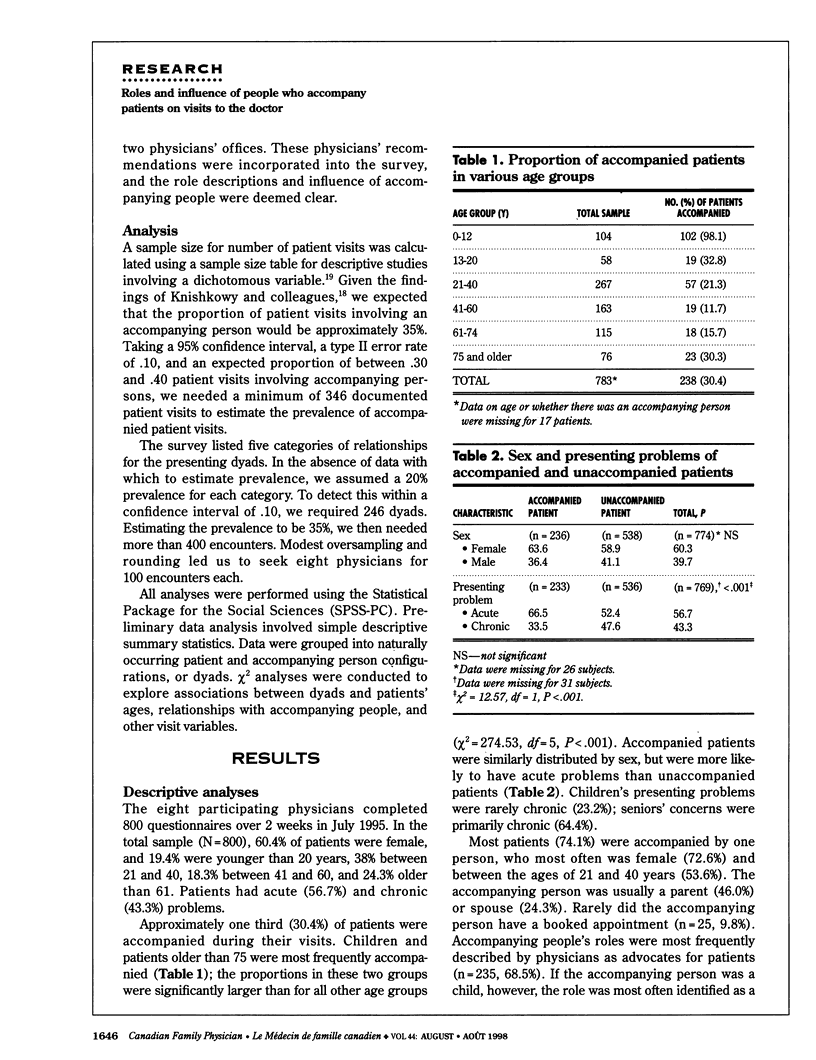

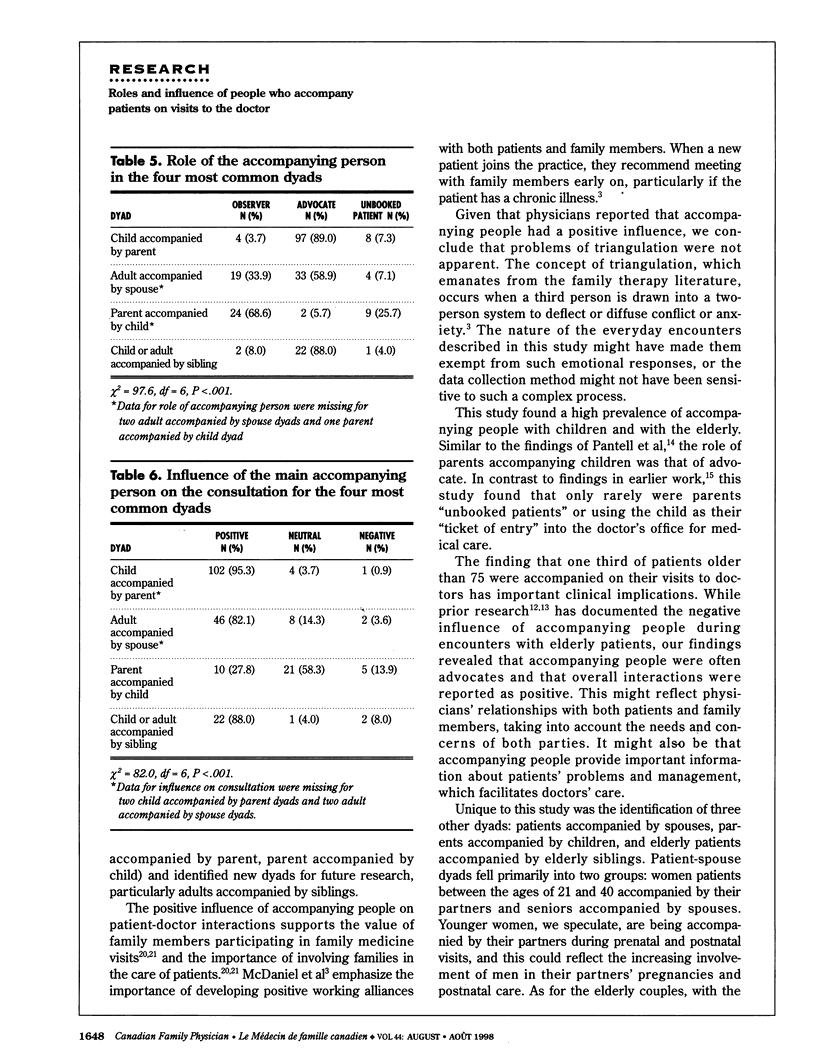
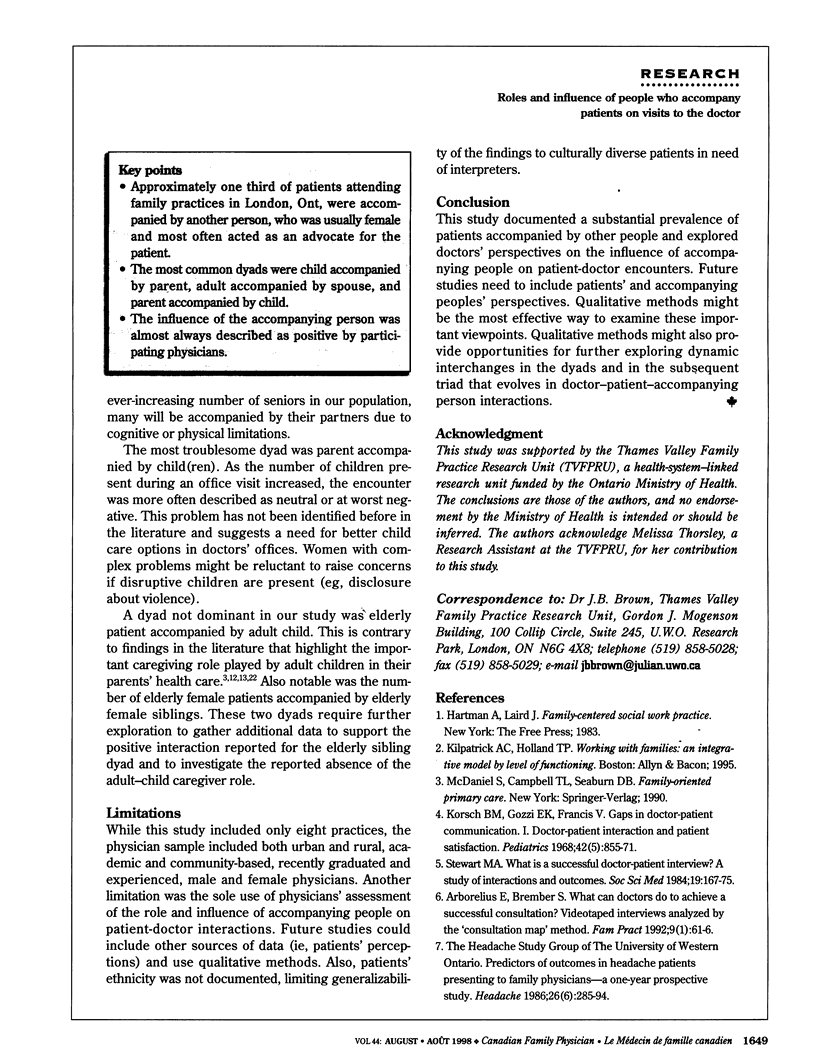
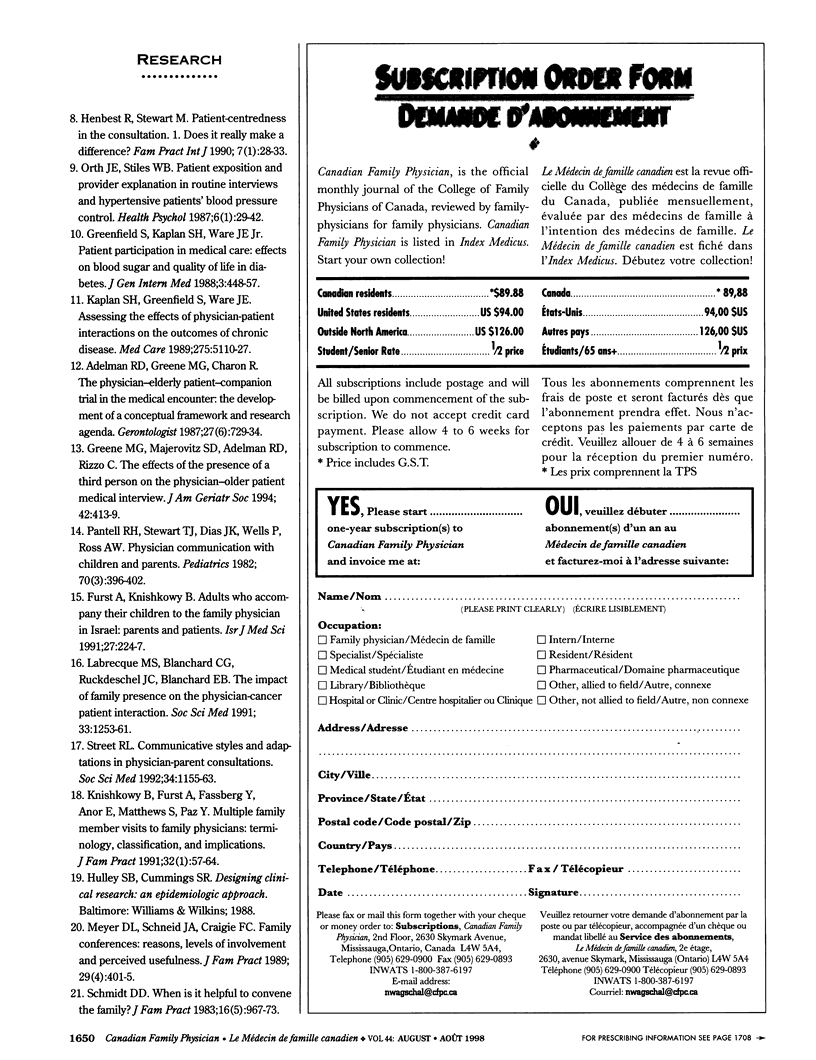
Selected References
These references are in PubMed. This may not be the complete list of references from this article.
- Adelman R. D., Greene M. G., Charon R. The physician-elderly patient-companion triad in the medical encounter: the development of a conceptual framework and research agenda. Gerontologist. 1987 Dec;27(6):729–734. doi: 10.1093/geront/27.6.729. [DOI] [PubMed] [Google Scholar]
- Arborelius E., Bremberg S. What can doctors do to achieve a successful consultation? Videotaped interviews analysed by the 'consultation map' method. Fam Pract. 1992 Mar;9(1):61–66. doi: 10.1093/fampra/9.1.61. [DOI] [PubMed] [Google Scholar]
- Furst A., Knishkowy B. Adults who accompany their children to the family physician in Israel: parents or patients? Isr J Med Sci. 1991 Apr;27(4):224–227. [PubMed] [Google Scholar]
- Greene M. G., Majerovitz S. D., Adelman R. D., Rizzo C. The effects of the presence of a third person on the physician-older patient medical interview. J Am Geriatr Soc. 1994 Apr;42(4):413–419. doi: 10.1111/j.1532-5415.1994.tb07490.x. [DOI] [PubMed] [Google Scholar]
- Henbest R. J., Stewart M. Patient-centredness in the consultation. 2: Does it really make a difference? Fam Pract. 1990 Mar;7(1):28–33. doi: 10.1093/fampra/7.1.28. [DOI] [PubMed] [Google Scholar]
- Knishkowy B., Furst A., Fassberg Y., Anor E., Matthews S., Paz Y. Multiple family member visits to family physicians. Terminology, classification, and implications. J Fam Pract. 1991 Jan;32(1):57–64. [PubMed] [Google Scholar]
- Korsch B. M., Gozzi E. K., Francis V. Gaps in doctor-patient communication. 1. Doctor-patient interaction and patient satisfaction. Pediatrics. 1968 Nov;42(5):855–871. [PubMed] [Google Scholar]
- Labrecque M. S., Blanchard C. G., Ruckdeschel J. C., Blanchard E. B. The impact of family presence on the physician-cancer patient interaction. Soc Sci Med. 1991;33(11):1253–1261. doi: 10.1016/0277-9536(91)90073-l. [DOI] [PubMed] [Google Scholar]
- Meyer D. L., Schneid J. A., Craigie F. C., Jr Family conferences: reasons, levels of involvement and perceived usefulness. J Fam Pract. 1989 Oct;29(4):401–405. [PubMed] [Google Scholar]
- Orth J. E., Stiles W. B., Scherwitz L., Hennrikus D., Vallbona C. Patient exposition and provider explanation in routine interviews and hypertensive patients' blood pressure control. Health Psychol. 1987;6(1):29–42. doi: 10.1037//0278-6133.6.1.29. [DOI] [PubMed] [Google Scholar]
- Pantell R. H., Stewart T. J., Dias J. K., Wells P., Ross A. W. Physician communication with children and parents. Pediatrics. 1982 Sep;70(3):396–402. [PubMed] [Google Scholar]
- Schmidt D. D. When is it helpful to convene the family? J Fam Pract. 1983 May;16(5):967–973. [PubMed] [Google Scholar]
- Stewart M. A. What is a successful doctor-patient interview? A study of interactions and outcomes. Soc Sci Med. 1984;19(2):167–175. doi: 10.1016/0277-9536(84)90284-3. [DOI] [PubMed] [Google Scholar]
- Street R. L. Communicative styles and adaptations in physician-parent consultations. Soc Sci Med. 1992 May;34(10):1155–1163. doi: 10.1016/0277-9536(92)90289-3. [DOI] [PubMed] [Google Scholar]


